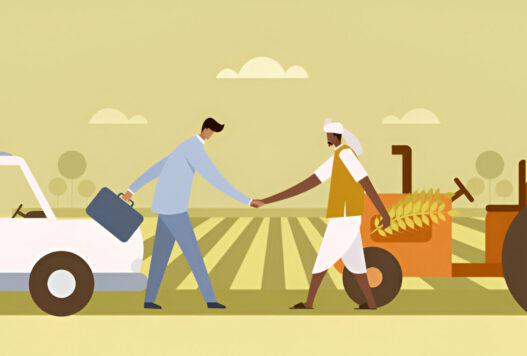The Pradhan Mantri Awaas Yojana-Gramin (PMAY-G) is a flagship program by the Government of India aimed at providing “Housing for All” in rural areas by 2024. This scheme provides financial assistance to eligible houseless households and those living in kutcha and dilapidated houses, ensuring access to basic amenities and a dignified life. This article provides a comprehensive overview of the PMAY-G scheme, including its key features, financial arrangements, implementation strategies, and monitoring mechanisms.
Background and Objectives
Launched on April 1, 2016, PMAY-G builds upon previous rural housing programs, addressing their limitations by focusing on quality, transparency, and effective implementation. The key objectives of PMAY-G are:
-
To provide pucca houses with basic amenities to all eligible houseless households and those living in kutcha houses.
-
To construct 2.95 crore houses in rural areas by 2024.
-
To ensure the use of locally available construction materials, appropriate house designs, and trained rural masons.
-
To promote green housing practices and disaster-resilient features.
-
To achieve transparency and accountability in the selection process and fund disbursement.
Key Features of PMAY-G
The PMAY-G scheme includes several key features:
-
Enhanced Unit Assistance: The unit cost is Rs. 1.20 lakh in plain areas and Rs. 1.30 lakh in hill states, North-Eastern states, difficult areas, and Integrated Action Plan (IAP) districts.
-
Minimum House Size: The minimum house size has been increased to 25 sq. m, including a dedicated area for hygienic cooking.
-
Convergence: The scheme promotes convergence with other government initiatives to provide toilets, drinking water, electricity, and clean cooking fuel.
-
Direct Benefit Transfer (DBT): Funds are directly transferred to the beneficiaries’ bank accounts through the Public Financial Management System (PFMS).
-
Technology Integration: The scheme utilizes AwaasSoft and AwaasApp for e-governance, data management, and real-time monitoring.
-
Emphasis on Local Resources: The scheme encourages the use of local materials, appropriate house designs, and skilled rural masons.
Financial Arrangements and Targets
The cost of the unit assistance is shared between the Central and State Governments in a 60:40 ratio in plain areas and 90:10 for North-Eastern states, two Hill states (Himachal Pradesh and Uttarakhand), and the Union Territory of Jammu & Kashmir. Other Union Territories receive 100% funding from the Central Government.
-
Annual Provision: 95% of the annual funds are earmarked for the construction of new houses, with the remaining 2% allocated for administrative expenses at the Central and State levels.
-
Additional Administrative Funds: Small states get additional funding of Rs. 45 lakh for administrative purposes.
-
Fund Release: Funds are released in two installments, with the first installment being 50% of the annual financial allocation and the second installment based on the utilization of the first installment and progress of the project.
Beneficiary Selection and Verification
The scheme uses the Socio-Economic Caste Census (SECC) 2011 data and Awaas+ lists for identifying eligible beneficiaries. The selection process emphasizes transparency and objectivity through:
-
Prioritization: Households are prioritized based on housing deprivation parameters, with preference given to the houseless, those living in houses with fewer rooms, and vulnerable groups.
-
Gram Sabha Verification: Priority lists are verified by the Gram Sabha or the lowest unit of local self-government.
-
Appellate Process: A grievance redressal mechanism is in place to address complaints regarding beneficiary selection.
-
Awaas+ Survey: The Awaas+ survey captures additional data and helps in identifying eligible households.
Implementation and Monitoring
The implementation of PMAY-G is monitored through a multi-level and multi-agency approach. Key aspects include:
-
AwaasSoft and AwaasApp: These e-governance tools are used for data management, real-time monitoring, and reporting.
-
National Level Monitors (NLMs): NLMs conduct field visits to assess progress.
-
District Development Coordination and Monitoring Committee (DISHA): DISHA committees, headed by Members of Parliament, monitor implementation at the district level.
-
Social Audit: Social audits are conducted to ensure transparency and accountability.
-
State Program Management Units (PMUs): State-level PMUs are established to oversee project implementation.
Key Features of the Revised Framework
The revised framework includes several key features:
-
Emphasis on Green Housing: Encourages the use of local materials, appropriate house designs, and disaster-resilient features.
-
Focus on Quality: Provides training to rural masons to ensure quality construction.
-
Transparency and Accountability: Uses technology and community participation to monitor progress and ensure accountability.
-
Financial Inclusion: Facilitates access to institutional finance for beneficiaries.
Conclusion
The Pradhan Mantri Awaas Yojana-Gramin (PMAY-G) is a comprehensive and ambitious scheme aimed at addressing the housing needs of rural India. By combining financial assistance with robust monitoring mechanisms, community participation, and a focus on sustainability, the scheme strives to provide quality housing and improve the lives of millions of people in rural areas. The revised guidelines reflect the government’s commitment to ensuring that the scheme is implemented effectively and that its benefits reach the most deserving beneficiaries.




